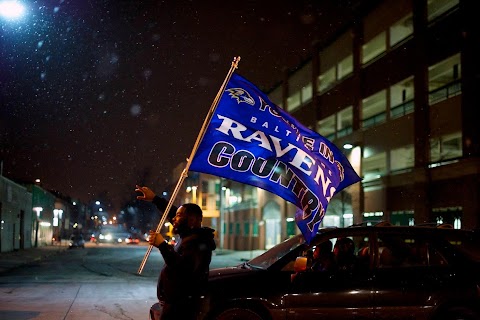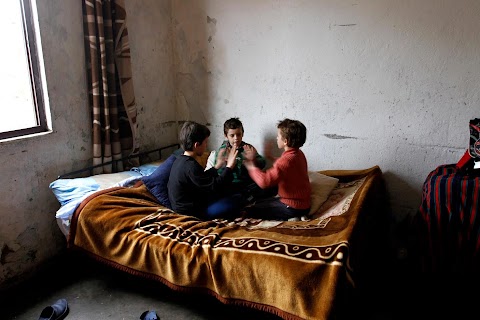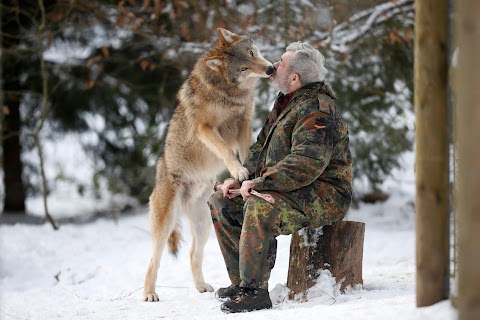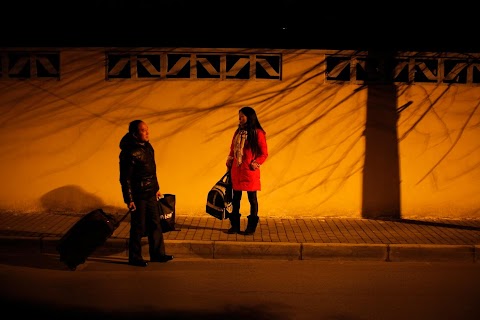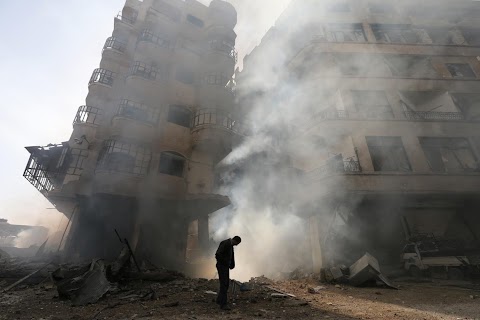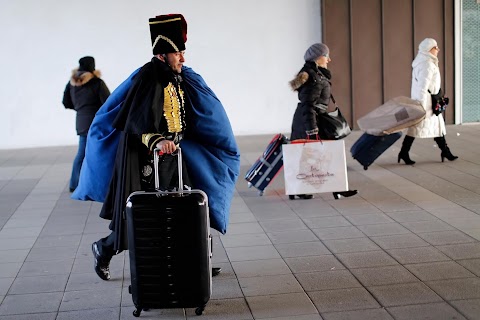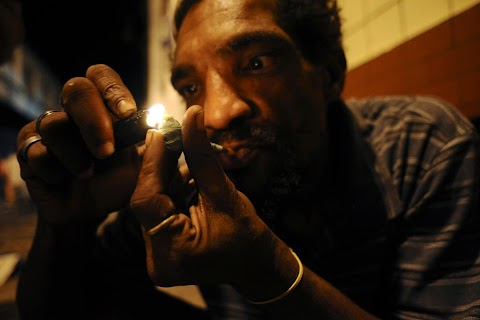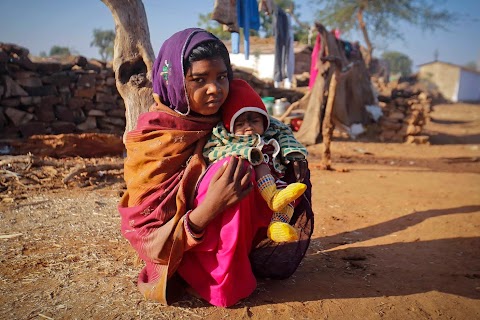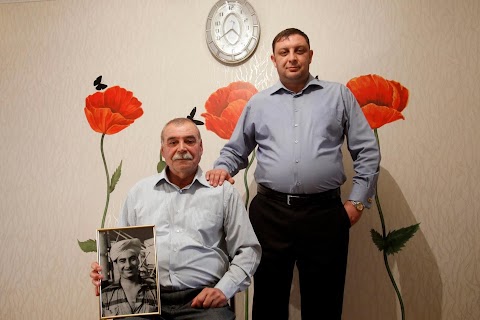
Oil in the blood
Oil practically flows through the veins of the Aliyev family, just as it flows through the history of their home country, Azerbaijan.
Tofik Aliyev (left), his son Namik (right) and his late father Meirali, grinning from the black-and-white photo that Tofik holds, all worked in oil production - an industry that provides Azerbaijan with more than 50 percent of its Gross Domestic Product.

Oil platforms are partially obscured by a heavy fog hanging over the Caspian Sea off the coast of Azerbaijan, where industrial oil production began as long ago as the mid-19th century.
The country's modern oil industry faltered when Azerbaijan gained independence after the fall of the Soviet Union, but investment later returned, new reserves were tapped and oil started to flow again: last year an estimated 43 million tonnes were pumped.
Slideshow

Thirty-two-year-old oil worker Namik Aliyev stands next to a billboard, showing Azerbaijan's President Ilham Aliyev and his father, the late President Haidar Aliyev, in front of an Azeri flag. The oil industry, which contributes such a large proportion of Azerbaijan's GDP, is of huge political importance to the country.

An Azeri flag flutters in the wind on an oil platform in the Caspian Sea.

Oil workers arrive by helicopter.

Namik Aliyev gives directions to his assistants on a Caspian Sea oil platform.

He uses his fingers to check the quality of the oil on the rig.

Aliyev climbs up the stairs of the oil platform.

He checks his mobile while working on the rig.

Gauges are used to help measure pressure at the platform.

A kitchen worker enjoys a cigarette in the rig’s smoking room.

Bright lights glow through heavy fog at the rig.

Photographs of Azerbaijan's former President Heydar Aliyev are displayed at the platform.

Zaur Umudov, a cook on the oil platform, looks out of the kitchen.

Namik Aliyev drinks a cup of tea on the rig during a short break, while his boss Anar Jafarov speaks on the phone.

Aliyev takes a helicopter with his co-workers to fly back home to the capital Baku.

Aliyev stands in the courtyard of his home in a Baku suburb.

He gives his elder daughter Nastia a hug while his middle daughter Alina looks on.

Aliyev leans against his car while talking on the phone in front of his apartment.

Soviet-era blocks of flats can be seen through the windscreen of Aliyev's car.

A helicopter descends through the foggy air to land on an oil platform in the Caspian Sea.

Oil derricks are silhouetted against the rising sun in an oilfield in Baku.
"Three generations of Azeri oil workers stared into my camera."
Namik Aliyev looked out admiringly at the nodding oil pumps silhouetted as the sun set over the Caspian Sea. He turned to me and said proudly: “This is Azerbaijan!”
Commercial oil production has a long history in Azerbaijan, a country of 9 million people at the crossroads of Eastern Europe and Western Asia. Starting with European prospectors in the 19th century, the industry became a major part of the Soviet economic model and a strategic goal to be protected at all costs.
With the fall of the Soviet Union, production faltered as Azerbaijan struggled with its independence, but soon investment returned, new reserves were tapped and the oil started to flow again. Offshore rigs are responsible for 80 percent of the 43 million tonnes of oil pumped from Azerbaijan last year, and this is the reason I found myself on a helicopter bound for the imaginatively named ‘oil platform number 5’, about 100 km from the coast, in the waters of the Caspian Sea.
This is where I met Namik. A stocky 32 year old, he has been in the business for the relatively short period of 12 years, but oil is in his blood. Every day Namik tours the platform, accompanied by his two assistants, checking the equipment and taking oil samples for analysis. He puts his ear to the pipes to check the oil is running smoothly and rubs samples between his fingers to feel the structure.
He gives orders, saying a valve should be shut or a bolt should be turned, and the group moves on. This checking session lasted about 30 minutes. After a glass of local sweet tea, the most popular social lubricant in this region, it’s time to start the procedure again. And so the cycle repeats throughout the working day, for the 15 days of each shift on the platform. Evenings are spent over backgammon and dominos accompanied by indispensible glasses of tea.
I was supposed to be on board for just one day. Then, suddenly, we were enveloped in fog and everything disappeared from view around us. The operations centre informed us that the bad weather would continue for several days and flying would be impossible. I was secretly happy that I might get to stay on the platform for longer than planned.
For Namik and his colleagues it was a deep disappointment that they couldn’t get back to their families. Luckily for them, there was a boat passing by that could pick us up and transfer us to a nearby island, where flights were still leaving. The Soviet-era boat docked in the darkness, struggling in the waves, and it was a choppy 4-hour ride to our destination – a world away from the smooth Eurocopter flight that brought us there.
The next morning there was one more helicopter ride to complete the final leg of the journey and at last Namik was home, being greeted by his wife, three daughters and parents.
Namik’s father Tofik worked in the oil business for 47 years, and spent time in Russia and Yemen before returning to Azerbaijan. As we sat around the tea table the elder Aliyev led the conversation, his son reverently quiet in the presence of his father. The ladies never joined us; they were occupied with serving and caring for the children.
Namik recalled his grandfather who worked in the oil business from 1945 until he died in 2009. He had been the one to show 6-year-old Namik an oil platform for the first time. Living in an oil-rich region with your father and grandfather in the business, I reflected there would be little choice in your career path. Luckily Namik wanted it and felt no regret that he had followed in their footsteps. Namik’s wage of 1,300 manats (1,230 euros) a month is a considerable sum in a country where the average, according to official statistics, is around 460 manats.
The following day, Namik invited me to meet his friends at a traditional get together. Predictably they were also mostly oil workers, and predictably their favourite haunt was the local teahouse.
Namik drove us in his blacked-out 2006 Russian-made Volga (colour: black), and described how easily his car could overtake his friend’s Lada. He knows this because sometimes at night they allow themselves the pleasure of a race.
Conversations with his friends revolved around cars, racing and politics - topics that reflect a certain degree of comfort that those in the business can feel. The oil industry accounts for around 1 percent of employment in Azerbaijan but the industry as a whole contributes more than half of the country’s GDP.
After supper that night I grabbed the chance before tea arrived to offer to take a family portrait. Namik and Tofik happily agreed and posed with a portrait of Namik’s grandfather Meirali. As three generations of Azeri oil workers stared into my camera, I closed the shutter and thought: this is Azerbaijan.

